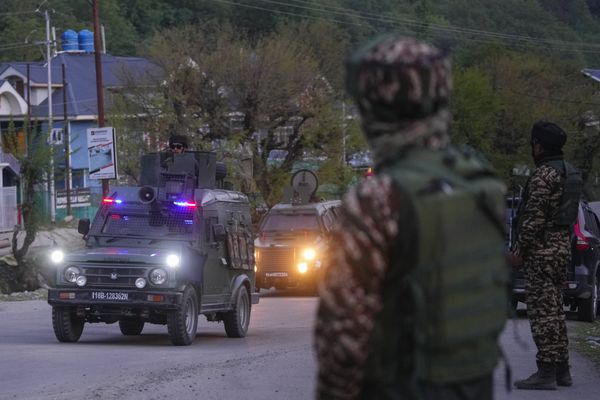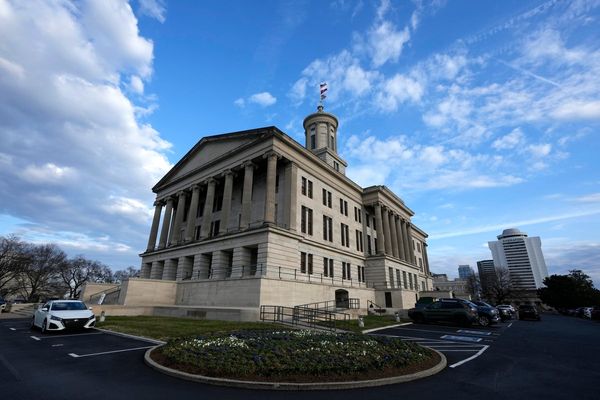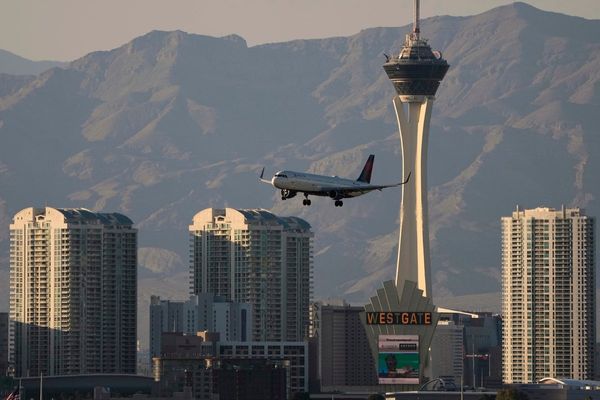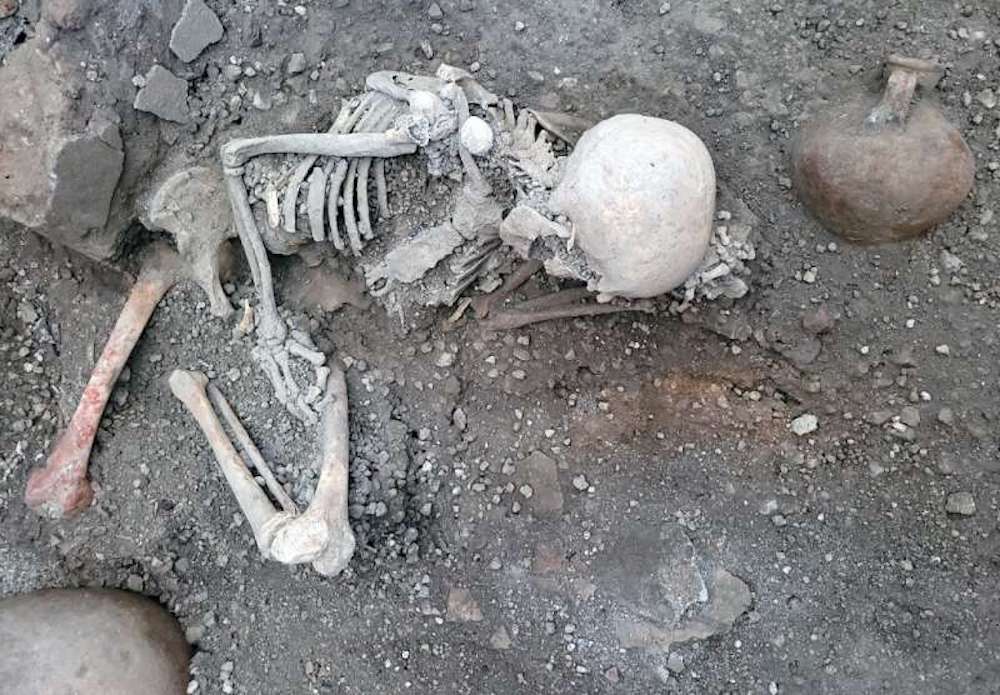
Archaeologists have discovered two skeletons buried beneath a collapsed wall in Pompeii and think that their deaths were the result of an earthquake that coincided with Mount Vesuvius' deadly eruption in A.D. 79.
The skeletons were found during excavations at the House of the Chaste Lovers, a block of buildings that were part of the once-thriving Roman resort city. Researchers think that the remains are those of two men who were at least 55 years old and that they likely took refuge inside the home's utility room during the volcanic eruption just before the earthquake occurred, according to a statement.
When archaeologists removed the skull and neck vertebrae from one of the skeletons, they found pieces of organic matter that were most likely part of "a bundle of fabric" that contained six coins, including two Roman-era silver denarii, one dating to the second century B.C. and the other minted during the reign of Roman emperor Vespasian (ruled A.D. 69 to 79). They also found remnants of a beaded necklace.
Related: Ancient Romans sacrificed birds to the goddess Isis, burnt bones in Pompeii reveal
"Modern excavation techniques help to shed light on the inferno that over two days descended on Pompeii and led to the complete destruction of the city, killing many of its inhabitants: men, women and children," Gabriel Zuchtriegel, director of the Pompeii Archaeological Park, said in the statement.
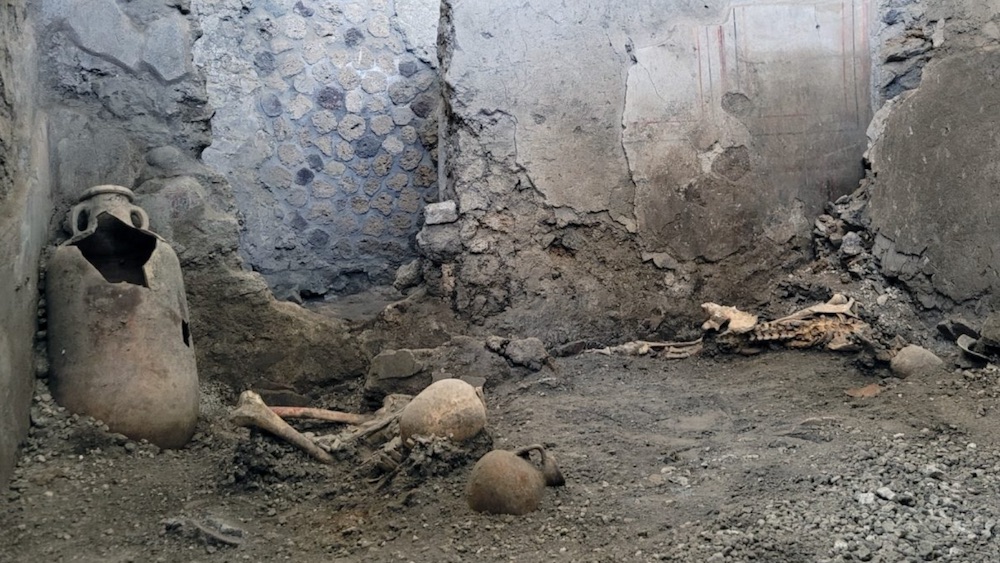
Researchers also discovered several other artifacts inside the room, including an amphora (a two-handled clay jar) and a variety of vessels, bowls and jugs. In an adjacent kitchen, archaeologists found powdered lime piled on a countertop that was being used during an ongoing construction project, amphorae for carrying wine and a fresco depicting the former household's guardian deities.
But perhaps the most telling clue about these men's demise was the crushed building's western wall, which "demonstrate[s] the tremendous force of the earthquakes that took place at the same time as the eruption: the entire upper section was detached and fell into the room, crushing and burying the other individual," according to the statement.
Pompeii and the nearby town of Herculaneum were never the same again after their tremendous natural disasters; the volcanic eruptions, debris and poisonous gases killed nearly 2,000 people, while the remainder of the cities' up to 20,000 residents fled to the southern Italian coast, resettling in the communities of Cumae, Naples, Ostia and Puteoli, according to previous research.

